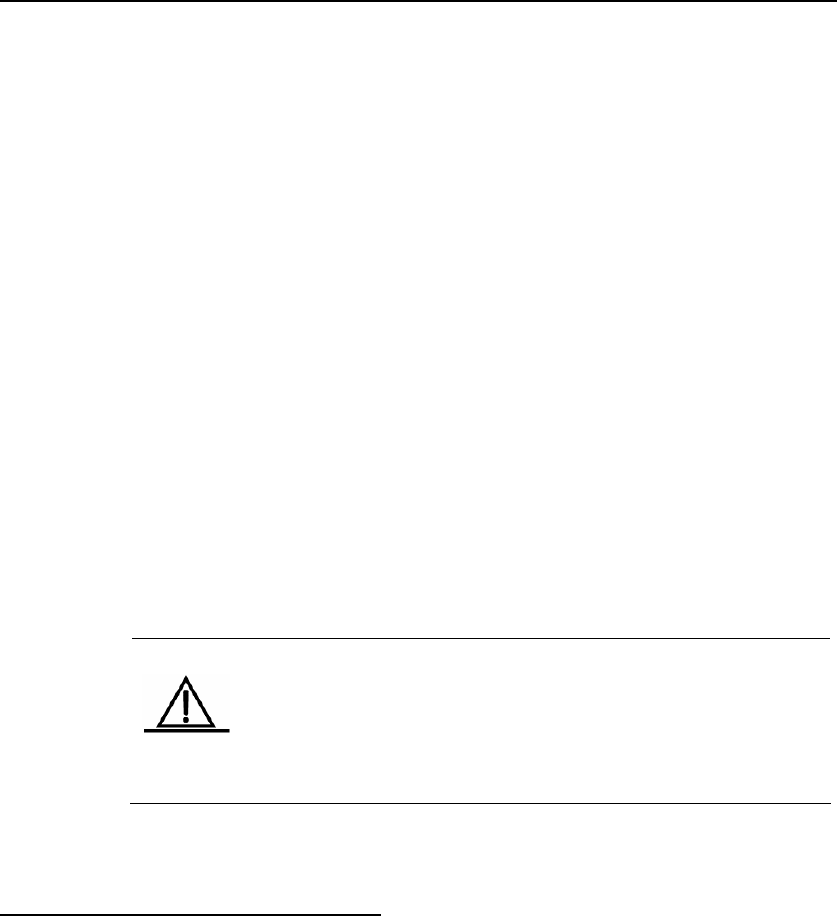
DES-7200 Configuration Guide Chapter 3 BFD Configuration
3-3
z Desired Min Tx Interval: the minimum BFD packets sending interval for the
local protocol.
z Required Min Rx Interval: the minimum BFD packets receiving interval for
the local protocol.
z Required Min Echo Rx Interval: the minimum Echo packets receiving
interval for the local protocol (if the Echo function is not supported for the
local protocol, set the value to 0)
z Auth Type: the authentication type(optional), including:
¾ Simple Password
¾ Keyed MD5
¾ Meticulous Keyed MD5
¾ Keyed SHA1
¾ Meticulous Keyed SHA1
z Auth Length: the authentication data length
z Authentication Data: the authentication data field
Caution
Since v10.3(4b3), DES7200 supports the packet format in
version 1 and version 0. By default, version 1 is used for the
packet sending of BFD session. If the packets sent from the
peer with version 1 are received, it will automatically switch to
the version 0 to establish the session.
3.1.3 BFD Operation Mechanism
The BFD detection mechanism is independent from the applicated interface
media type, the encapsulation format mad the associated upper-layer protocols
such as OSPF、BGP、RIP. The BFD establishes a session between adjacent
routers, enables the route protocols to re-calculate the route table by rapidly
sending the detection fault to the running route protocols and decreases the
network convergence time sharply. The BFD itself can not discover the
neighbors, so it needs the upper-layer protocols to notify the neighbors of which
the session is established.


















